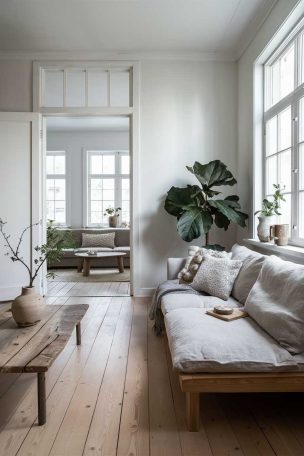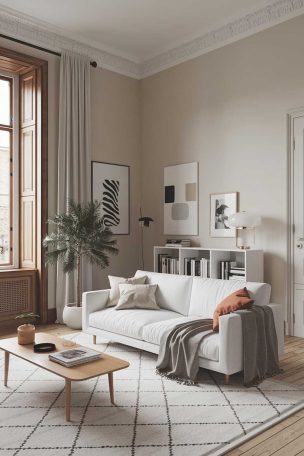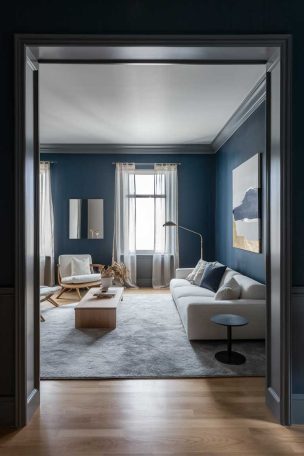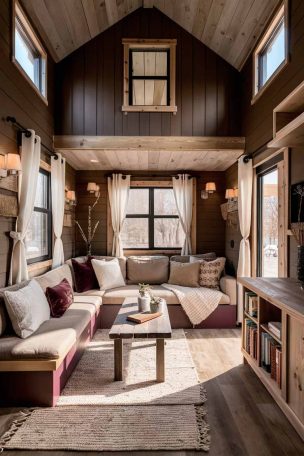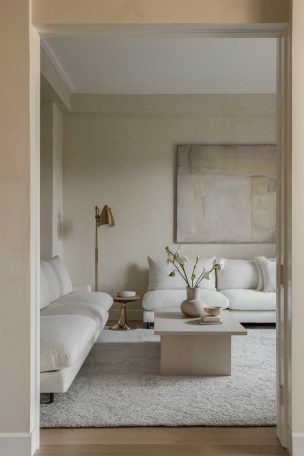Minimalist organic living rooms combine the clean lines and clutter-free approach of minimalism with the warmth and texture of natural, organic elements. This style is all about creating a space that’s both visually calming and deeply connected to nature.
By embracing this design philosophy, you’re not just creating a beautiful space – you’re cultivating an environment that promotes relaxation, mindfulness, and a deeper appreciation for the simple things in life. It’s about quality over quantity, thoughtful curation, and a return to natural materials and forms.
Fundamental Elements
Natural Materials
The foundation of any minimalist organic living room is using natural materials. These elements bring warmth, texture, and a sense of connection to the natural world.
Wood
Wood is perhaps the most versatile and essential material in this style. From floors to furniture, it adds warmth and character to any space.
- Light wood flooring can brighten a room and create a seamless, open feel.
- Exposed wooden ceiling beams add rustic charm and visual interest.
- Reclaimed wood furniture pieces bring history and sustainability into your space.
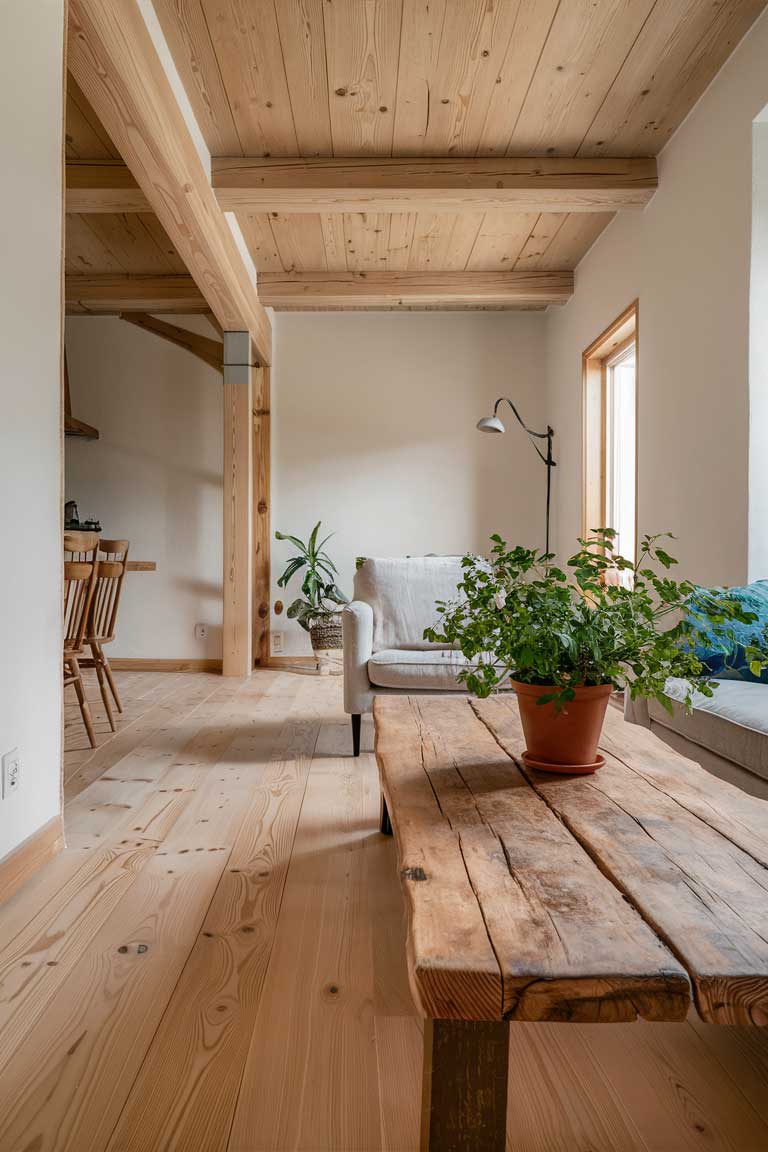
Stone
Stone elements can add a grounding, earthy feel to your living room.
- A natural stone feature wall can serve as a striking focal point.
- Stone coffee tables bring an organic, sculptural element to the room.
- Stone flooring options, like slate or travertine, can create a cool, serene atmosphere.
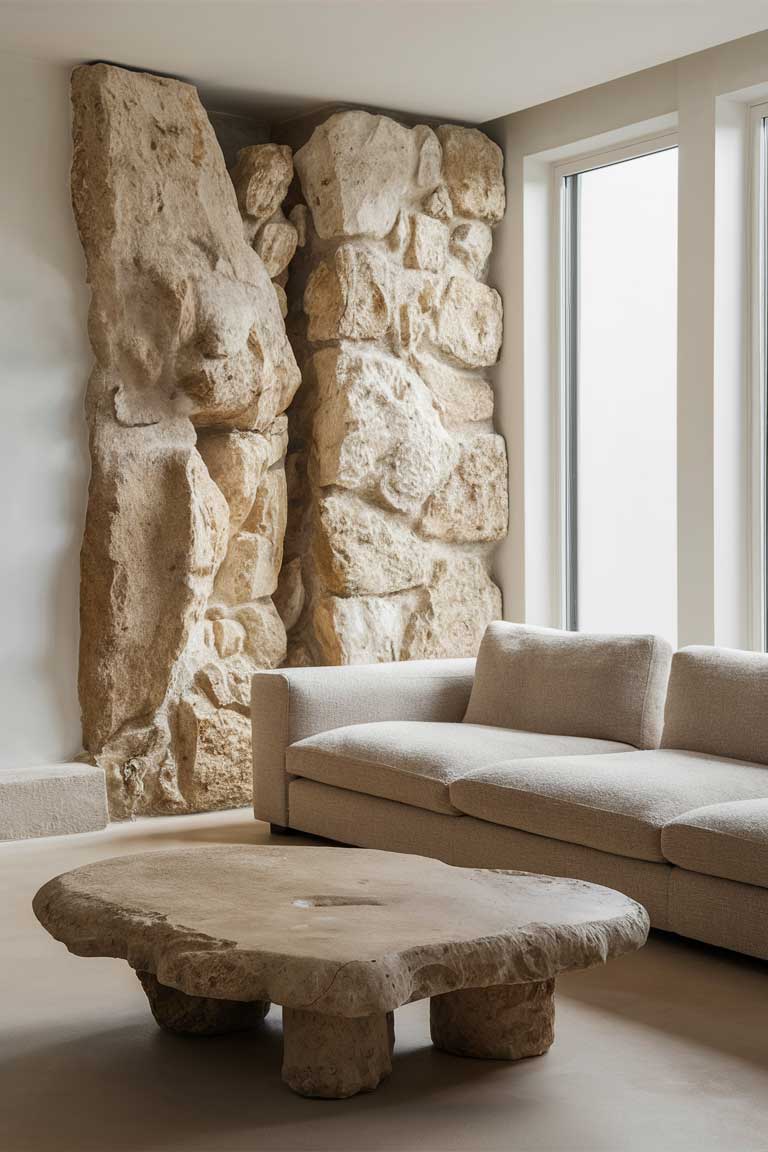
Organic Textiles
Textiles are where you can add softness and comfort to your minimalist organic space.
- Linen is perfect for sofas and curtains, offering a relaxed, natural look.
- Jute and wool rugs add warmth and texture underfoot.
- Organic cotton pillows and throws provide cozy accents.
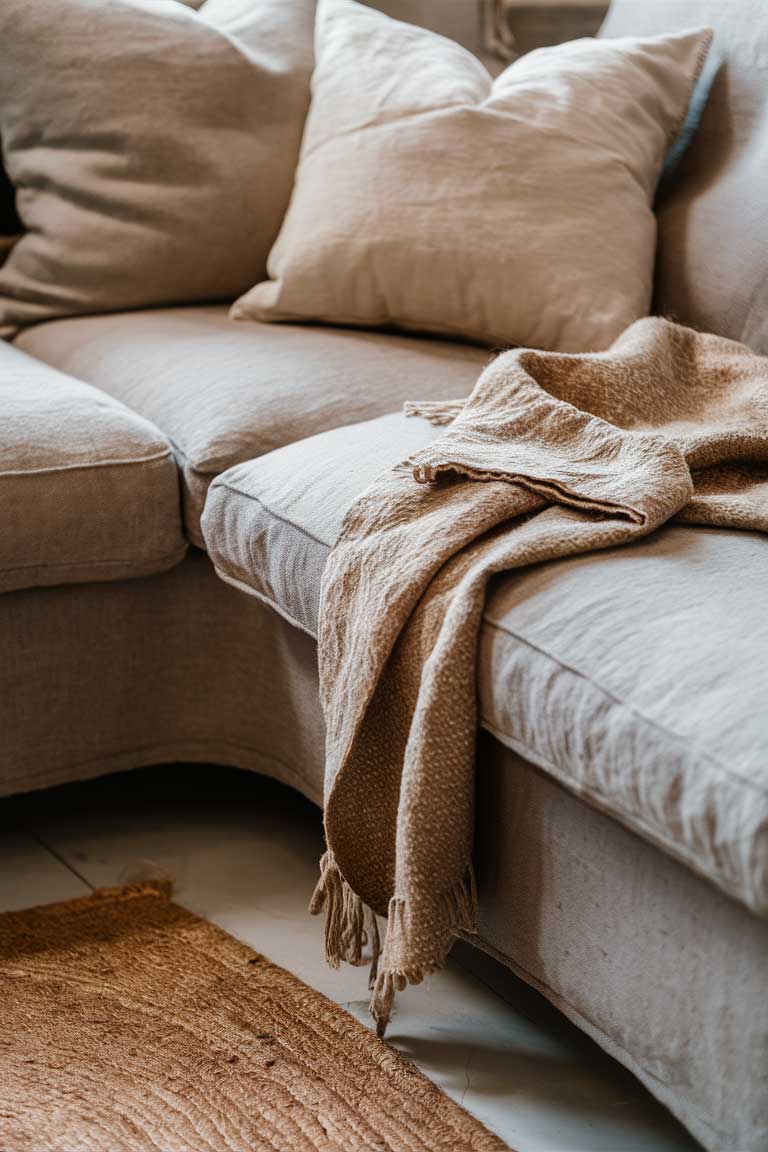
Color Palette
The color palette of a minimalist organic living room is typically subdued and inspired by nature. This doesn’t mean it has to be boring – there’s a whole world of subtle variations to explore.
Neutral Tones
- Warm whites can make a space feel open and inviting.
- Soft greys add depth and sophistication.
- Earthy beiges and browns bring warmth and groundedness.
Muted Colors
While neutrals form the base, don’t be afraid to incorporate subtle color accents. Think of the muted tones you might find in nature – soft sage greens, dusty blues, or gentle terracottas. These can be introduced through small decor items, artwork, or even plants.
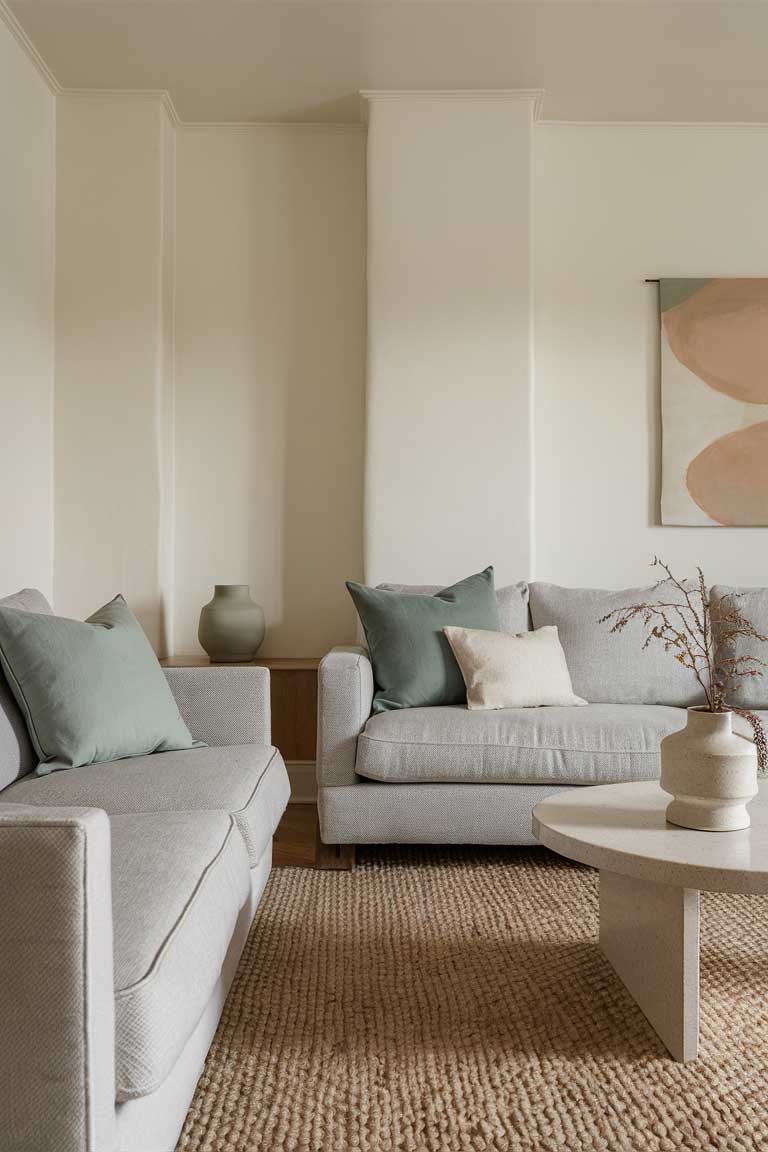
Natural Light
Maximizing natural light is crucial in a minimalist organic living room. It not only illuminates the space but also enhances the natural beauty of your materials and creates a connection with the outdoors.
- Large, unadorned windows are ideal for flooding the room with light.
- If privacy is a concern, consider sheer linen curtains that filter light beautifully.
- Strategically placed mirrors can help bounce light around the room, making it feel brighter and more spacious.
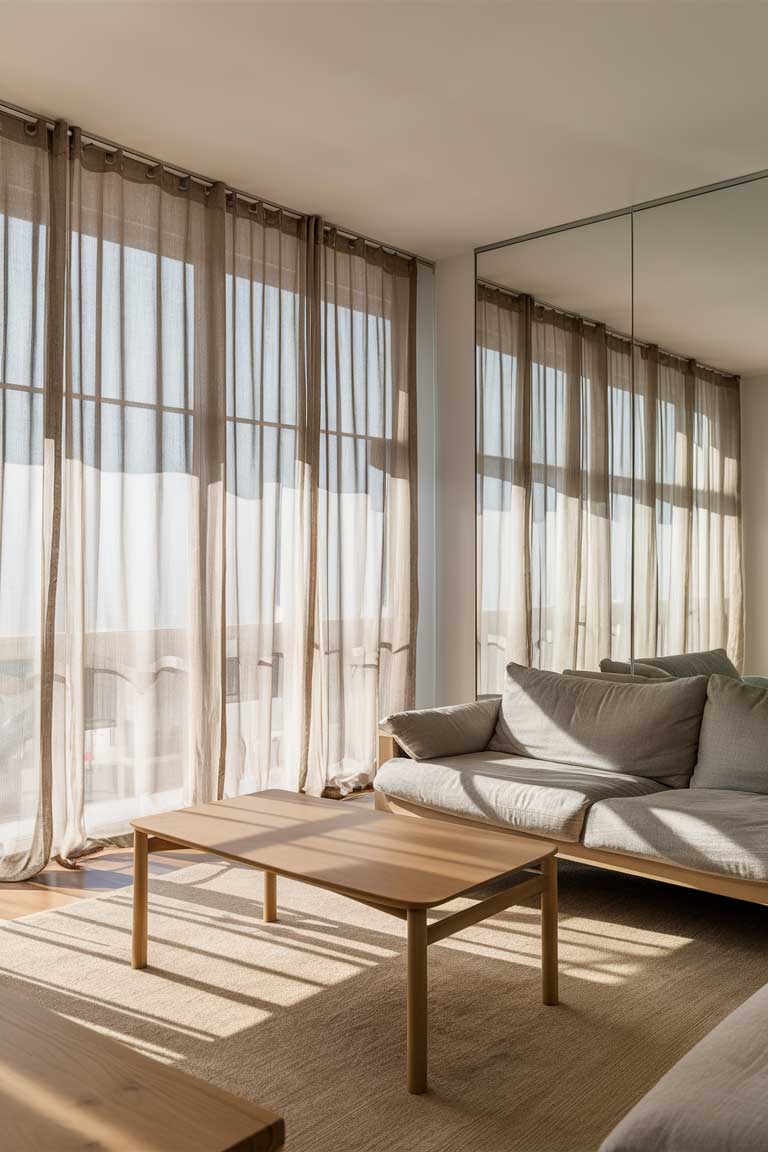
Furniture and Layout
When it comes to furniture in a minimalist organic living room, less is definitely more. Each piece should serve a purpose and contribute to the overall sense of calm and simplicity.
Seating
- Opt for low-profile sofas in natural fabrics like linen or organic cotton. These create a relaxed, unfussy look.
- An oversized chair with organic textures can serve as both a comfortable seating option and a statement piece.
- Floor cushions offer flexible, casual seating that can be easily stored when not in use.
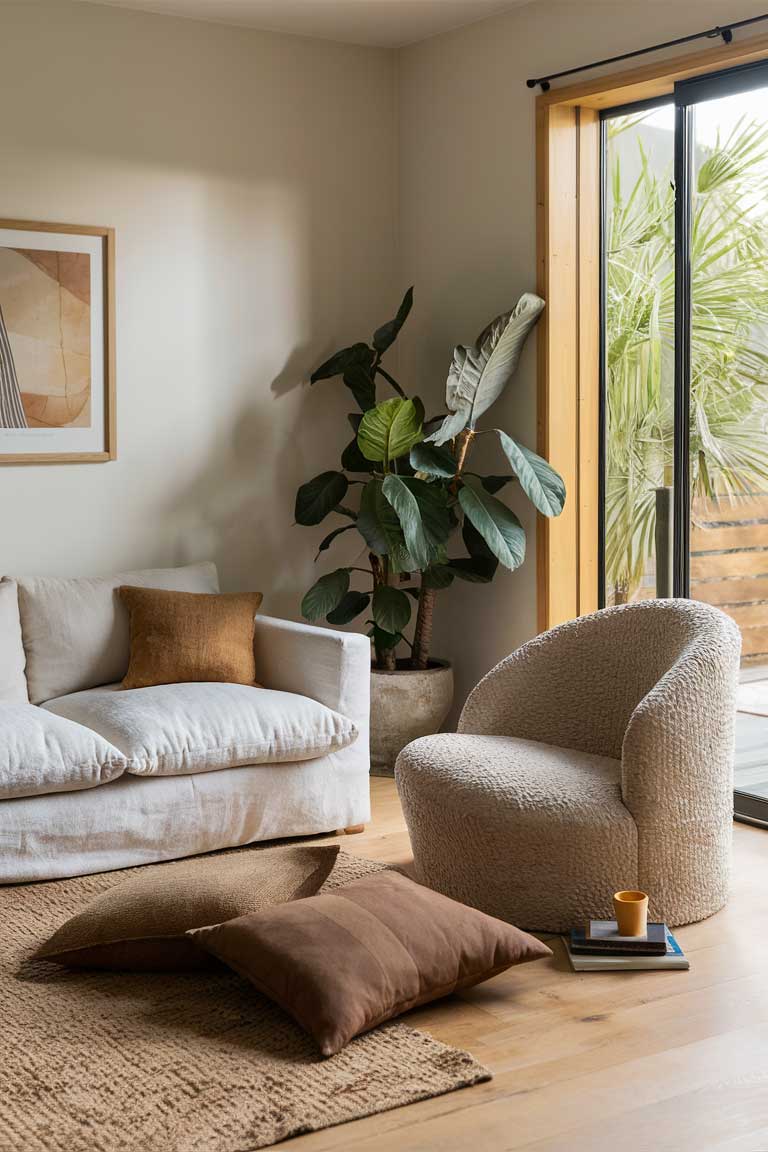
Tables
Coffee tables and side tables are opportunities to introduce interesting natural materials and shapes into your space.
- Wooden coffee tables can range from rustic reclaimed wood to sleek, curved designs.
- Natural stone coffee tables add an element of luxury and uniqueness.
- Consider multifunctional wooden benches that can serve as both seating and table space.
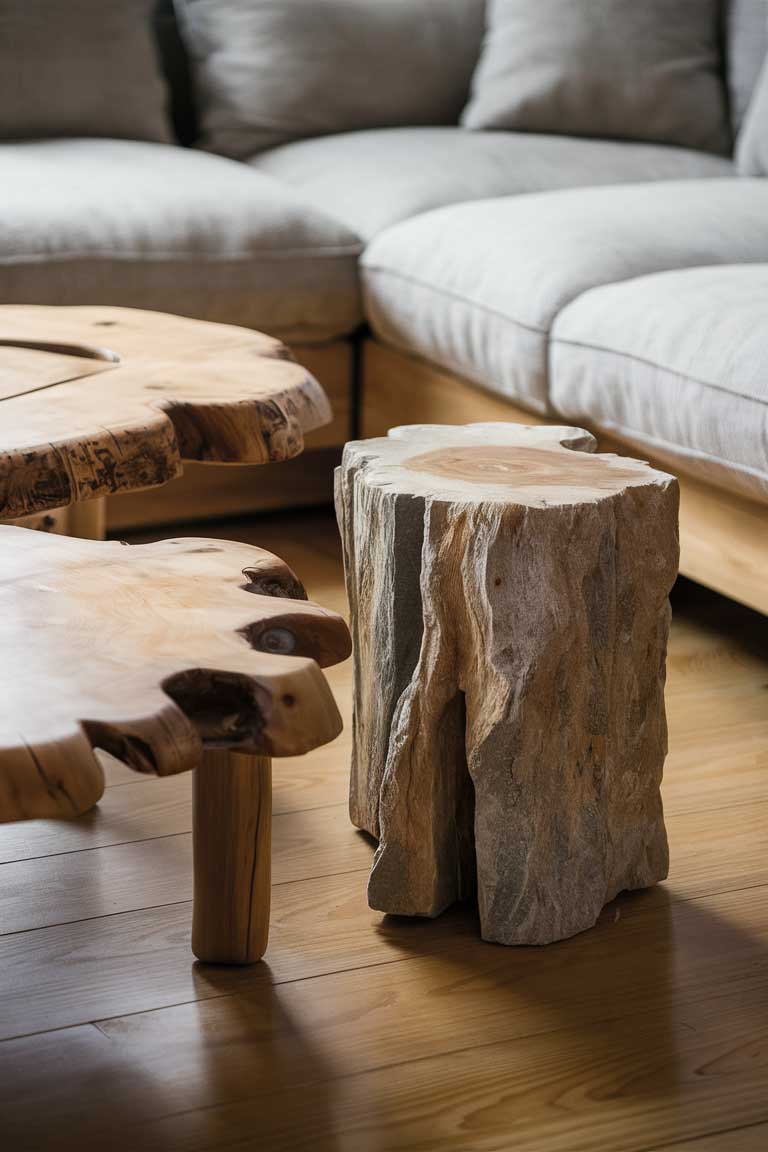
Storage and Display
In a minimalist space, smart storage solutions are key to maintaining a clutter-free environment.
- Open shelving with carefully curated organic decor can add interest without overwhelming the space.
- A minimalist organic bookshelf can display a few favorite books and objects.
- Woven baskets offer stylish storage for items you want to keep out of sight.
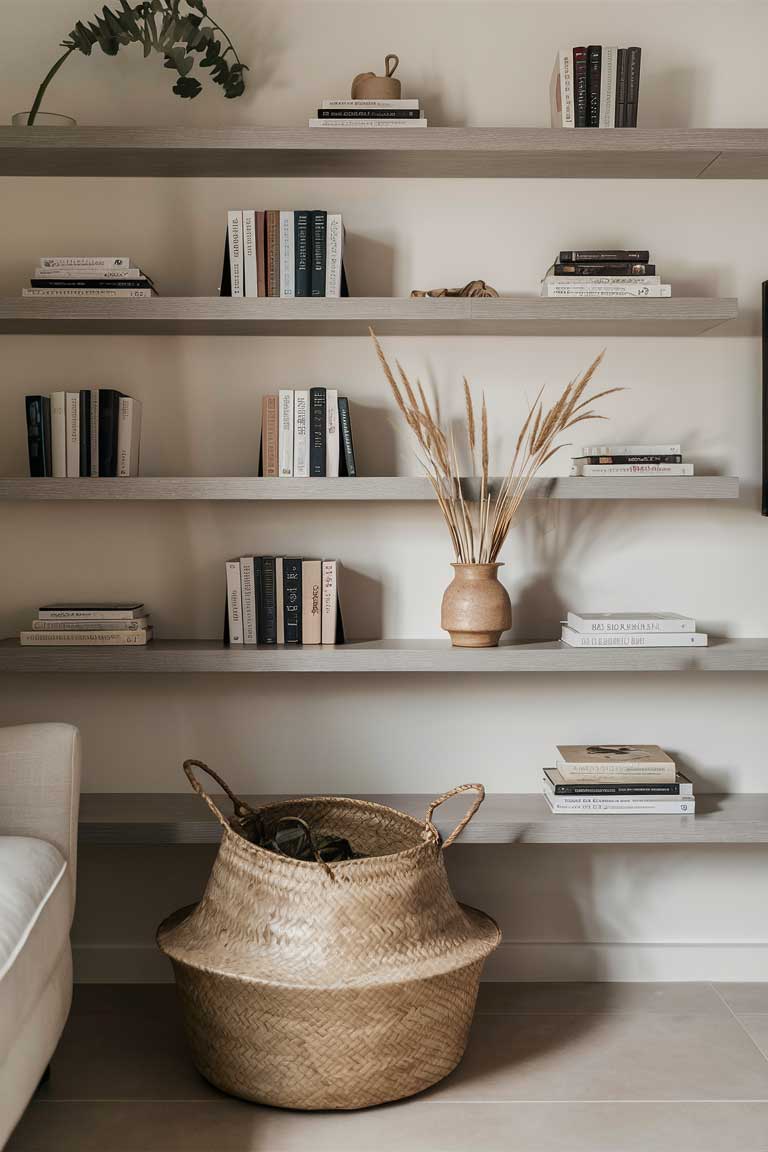
By thoughtfully selecting and arranging these fundamental elements, you’re well on your way to creating a minimalist organic living room that’s both beautiful and functional. Remember, the key is to keep things simple, natural, and meaningful to you. In the next sections, we’ll explore how to add personality and warmth to your space through decor, art, and lighting.
Organic Decor Elements
While minimalism advocates for less, the organic aspect of this style allows for thoughtful decoration that brings life and personality to your space. The key is to choose items that are natural and meaningful and contribute to the overall sense of calm.
Plants and Greenery
Nothing says “organic” quite like living plants. They not only purify the air but also add color, texture, and a sense of vitality to your minimalist space.
- Large statement plants, like a fiddle-leaf fig or a monstera, can serve as living sculptures.
- Small potted succulents or ferns can add touches of green without overwhelming the space.
- For a low-maintenance option, consider dried elements like pampas grass or eucalyptus.
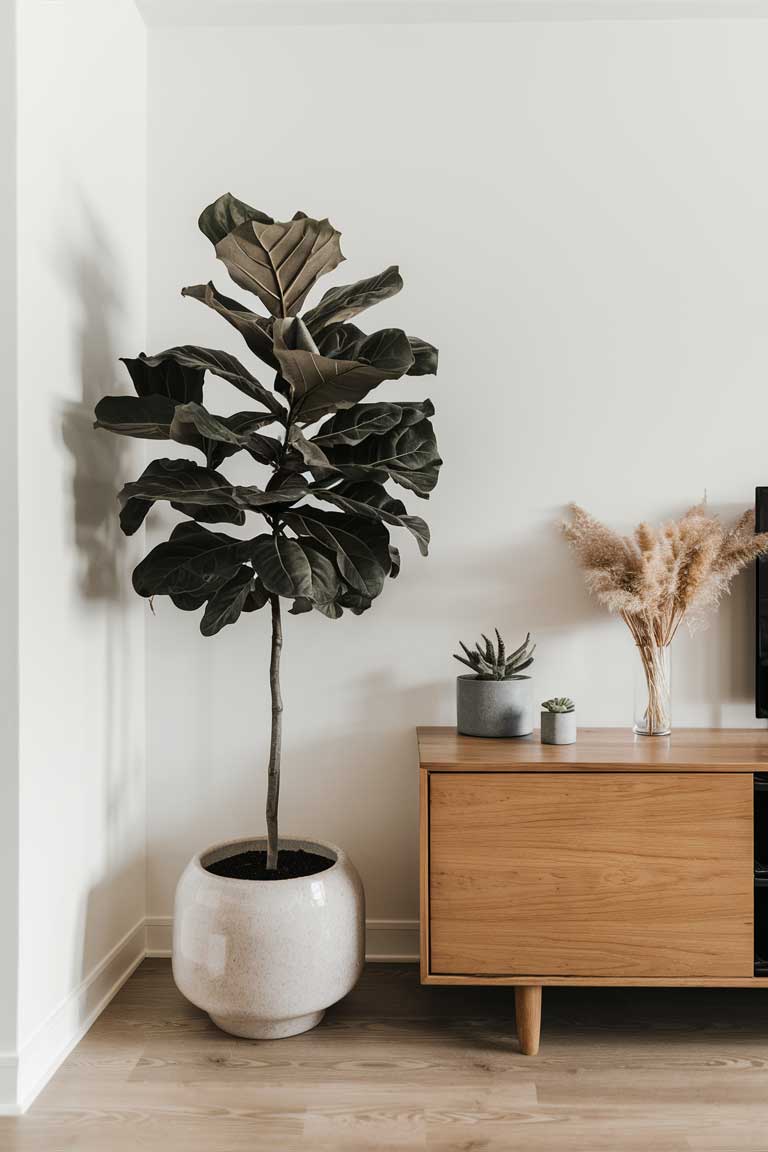
Natural Fiber Accents
Natural fibers add warmth and texture to your space, softening the potentially stark lines of minimalism.
- A woven wall hanging can serve as a soft, organic alternative to traditional wall art.
- Rattan pendant lights combine form and function, casting a warm glow and adding visual interest.
- A jute or sisal rug anchors the space and adds comfort underfoot.
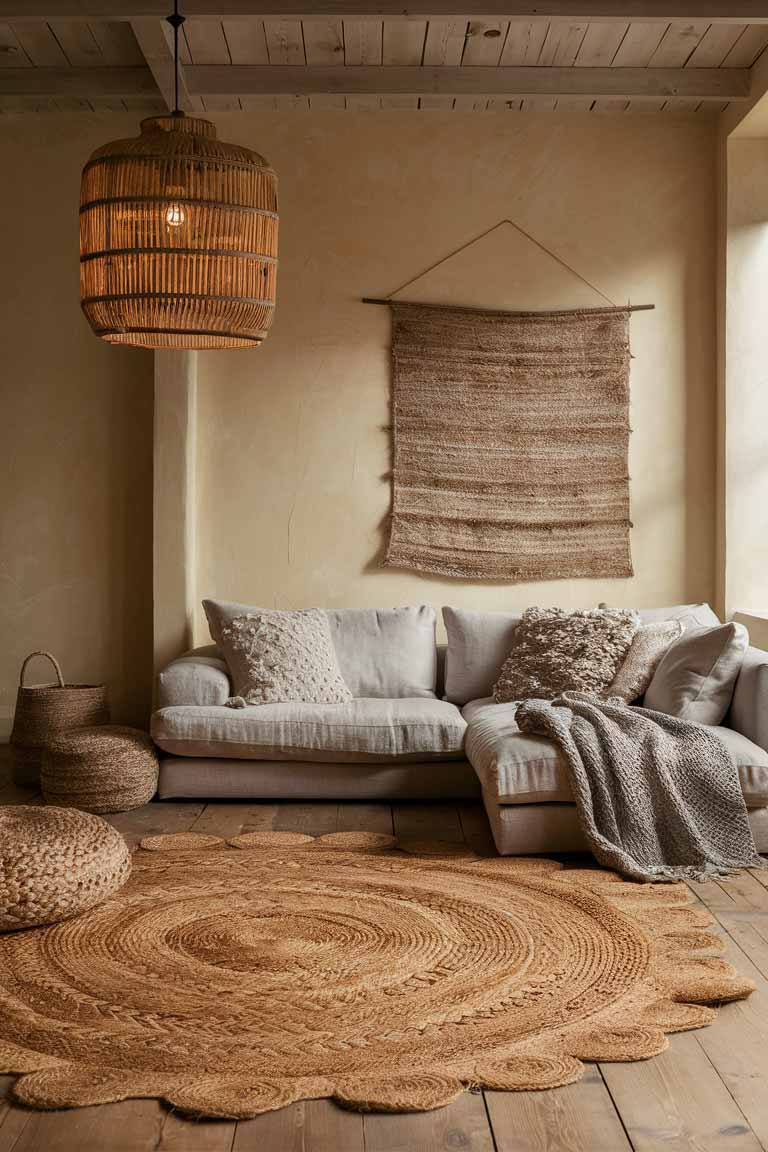
Handmade and Artisanal Pieces
Handcrafted items bring a human touch and uniqueness to your minimalist organic living room.
- Ceramic vases and pottery in organic shapes and earthy glazes make beautiful decorative accents.
- Handcrafted wooden objects, like a bowl or sculpture, add warmth and character.
- Organic cotton throws and pillows in subtle patterns or textures provide comfort and visual interest.
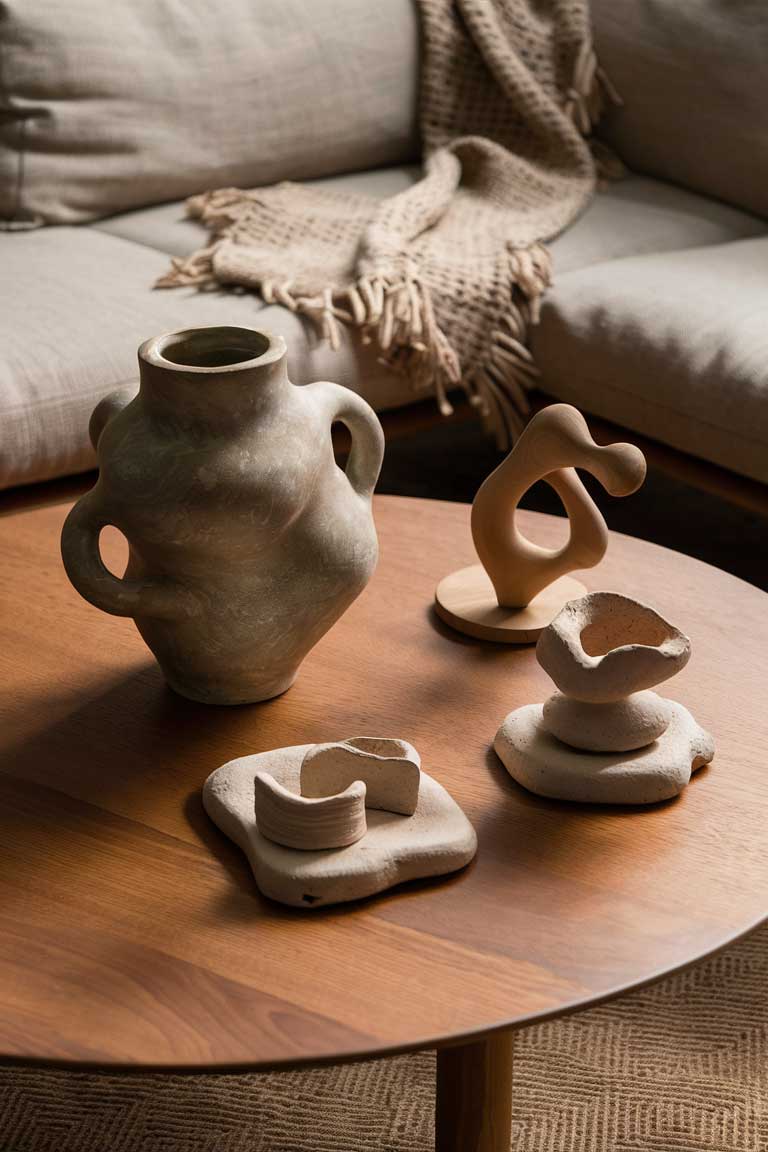
Art and Wall Decor
Art plays a crucial role in a minimalist organic living room, adding personality and focus without cluttering the space. The key is to choose pieces that complement the natural, serene vibe of the room.
Minimalist Organic Art
- Large, unframed abstract paintings in earthy tones can serve as a focal point.
- Nature-inspired photography, like close-ups of natural textures or landscapes, brings the outdoors in.
- Organic textured wall art adds depth and interest, such as a piece made from natural fibers or wood.
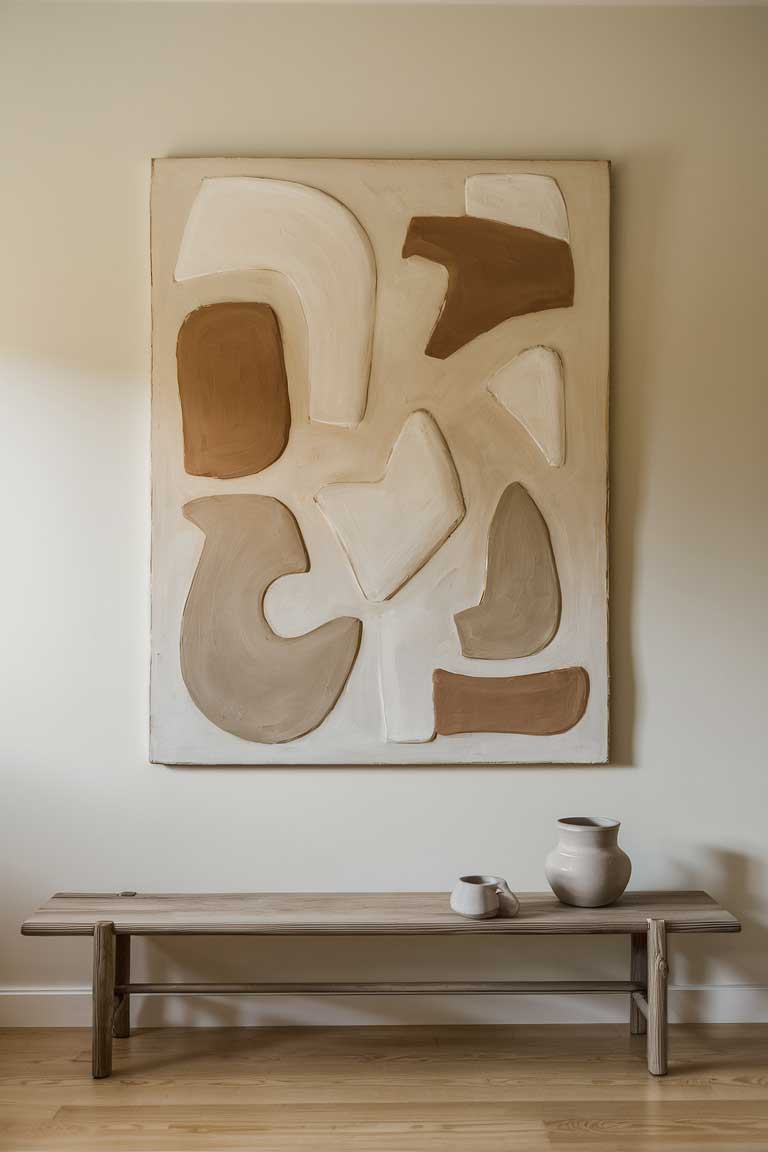
Alternative Wall Features
- Wooden slat feature walls add warmth and texture.
- Natural fiber tapestries can serve as a soft, sound-absorbing element.
- A minimalist organic gallery wall featuring a curated collection of smaller artworks and objects creates visual interest.
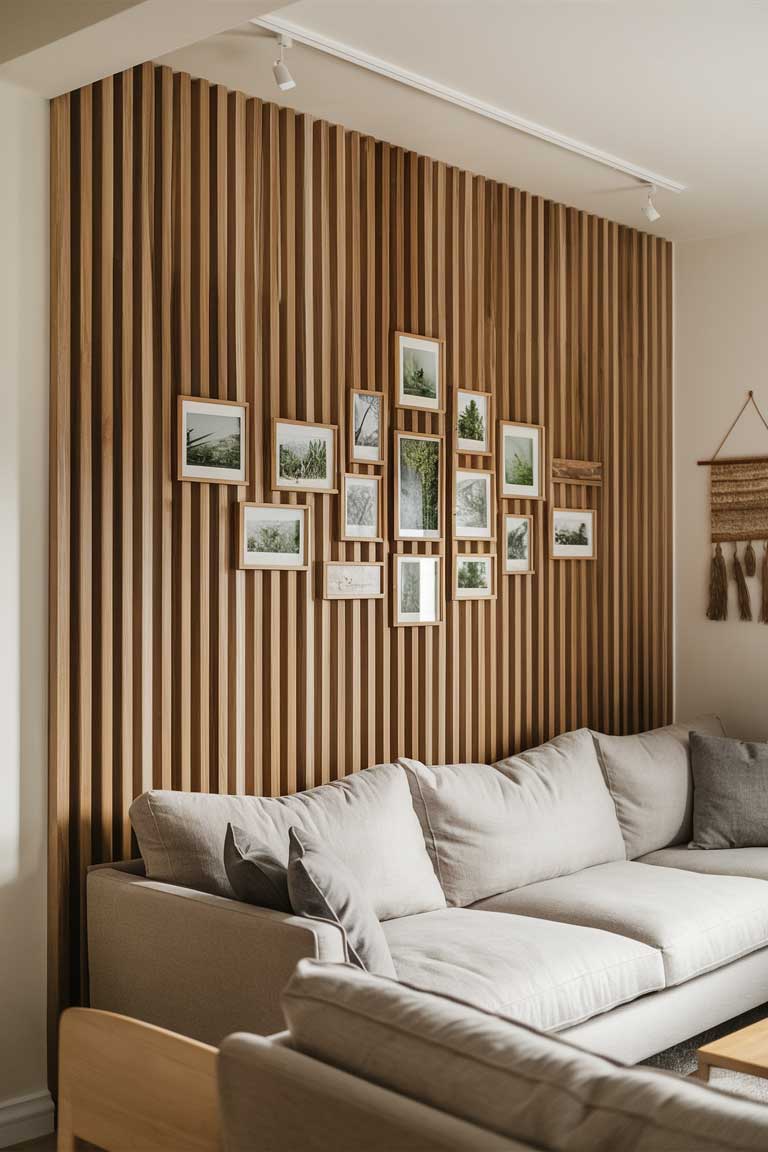
Lighting Design
Lighting is crucial in creating the right ambiance in your minimalist organic living room. It should enhance the natural materials and create a warm, inviting atmosphere.
Natural Light Enhancement
- Keep windows unobstructed to maximize daylight.
- Use light-reflecting surfaces and materials to bounce natural light around the room.
- Consider skylights or light tubes if your room lacks natural light sources.
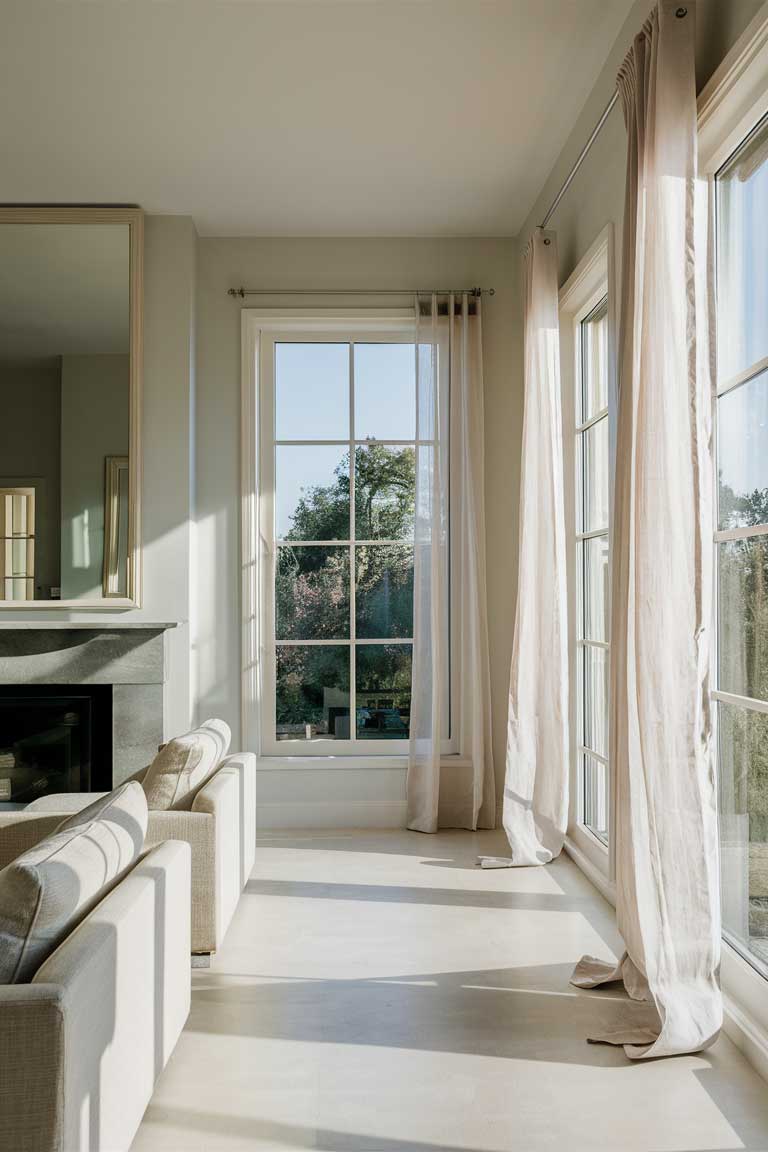
Organic Lighting Fixtures
- Woven rattan pendant lights add texture and cast interesting shadows.
- Simple candle arrangements create a warm, natural glow.
- Floor and table lamps with bases made from natural materials like wood or stone complement the organic theme.
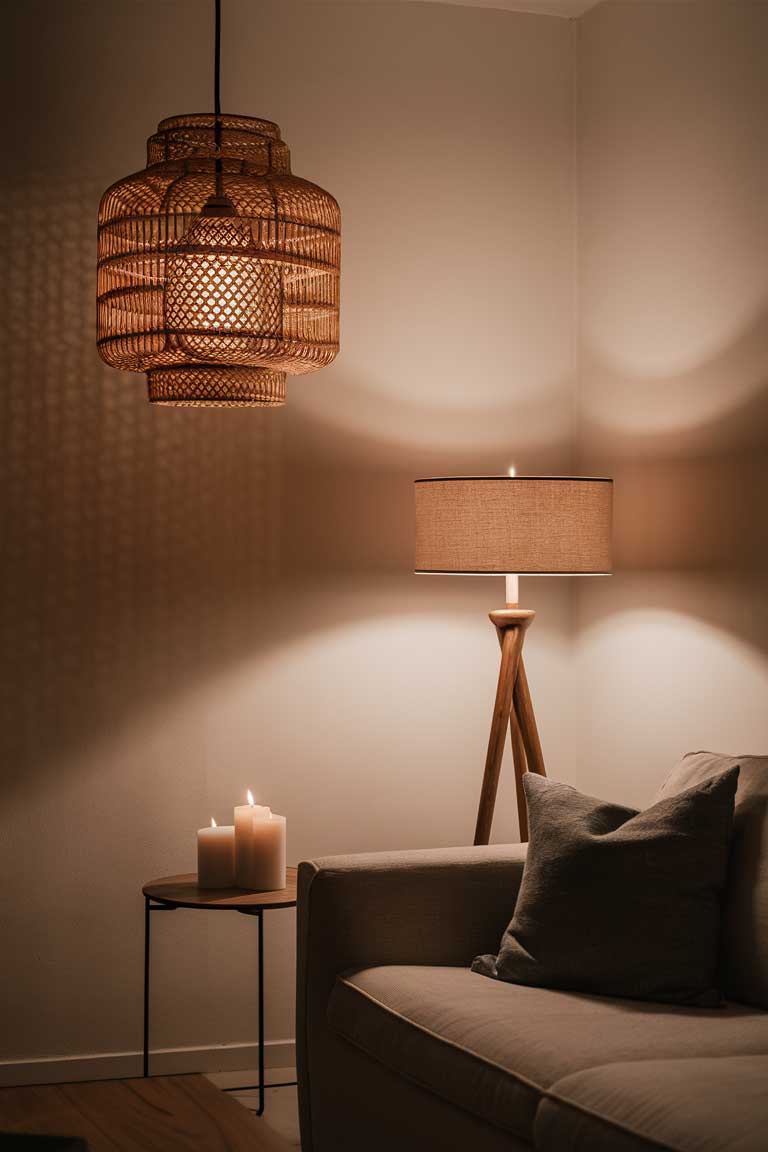
Textural Elements
Texture is key in a minimalist organic living room. It adds depth, interest, and warmth to the space without relying on busy patterns or bold colors.
Organic Textures
- Incorporate a mix of rough and smooth surfaces to create visual and tactile interest.
- Balance soft elements (like textiles) with hard elements (like wood or stone) for a harmonious feel.
- Layer textures thoughtfully to add depth without cluttering the space.
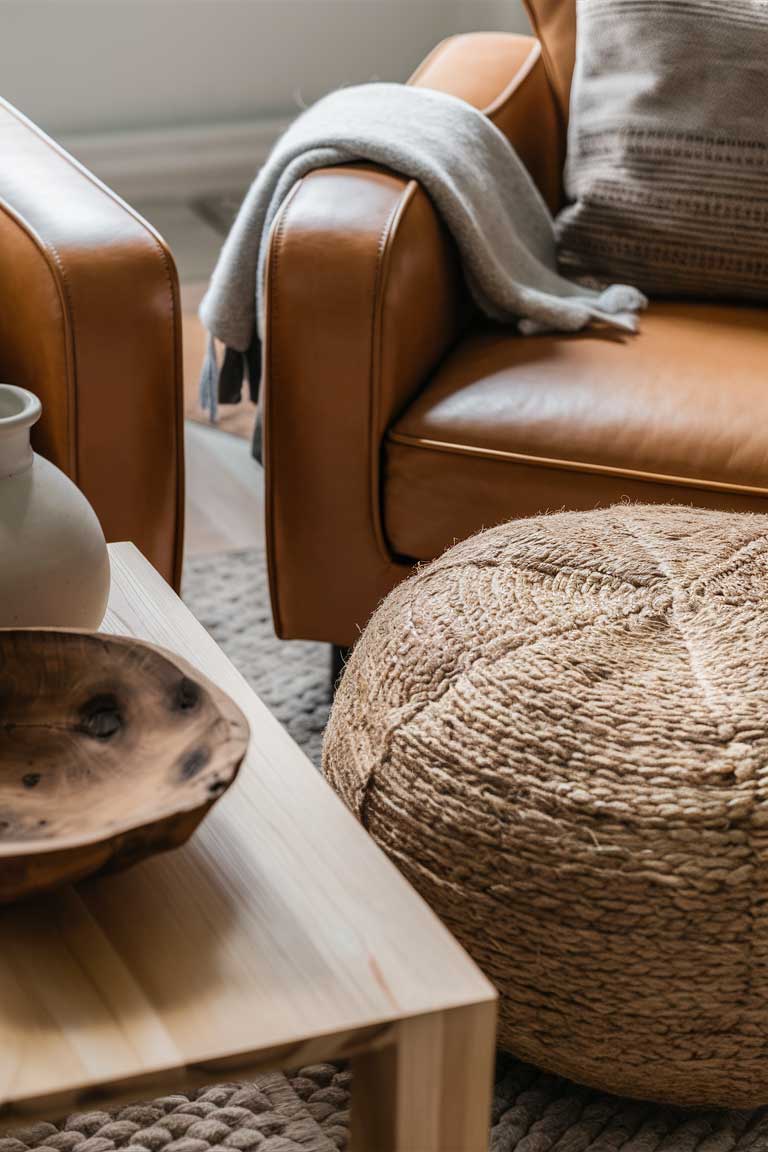
Tactile Furnishings
- Textured wool throws invite touch and add warmth.
- Organic cotton pillow covers with subtle patterns, or weaves add interest.
- Handwoven blankets or cushions bring an artisanal touch to the space.

Focal Points and Statement Pieces
Even in a minimalist space, it’s important to have elements that draw the eye and add character. These focal points should align with the organic, natural theme of the room.
Natural Focal Elements
- A minimalist organic fireplace, perhaps clad in natural stone, can serve as a stunning centerpiece.
- Large indoor plants can act as living sculptures, drawing the eye and adding life to the space.
- An oversized mirror with a simple frame can create a sense of space and reflect natural light.
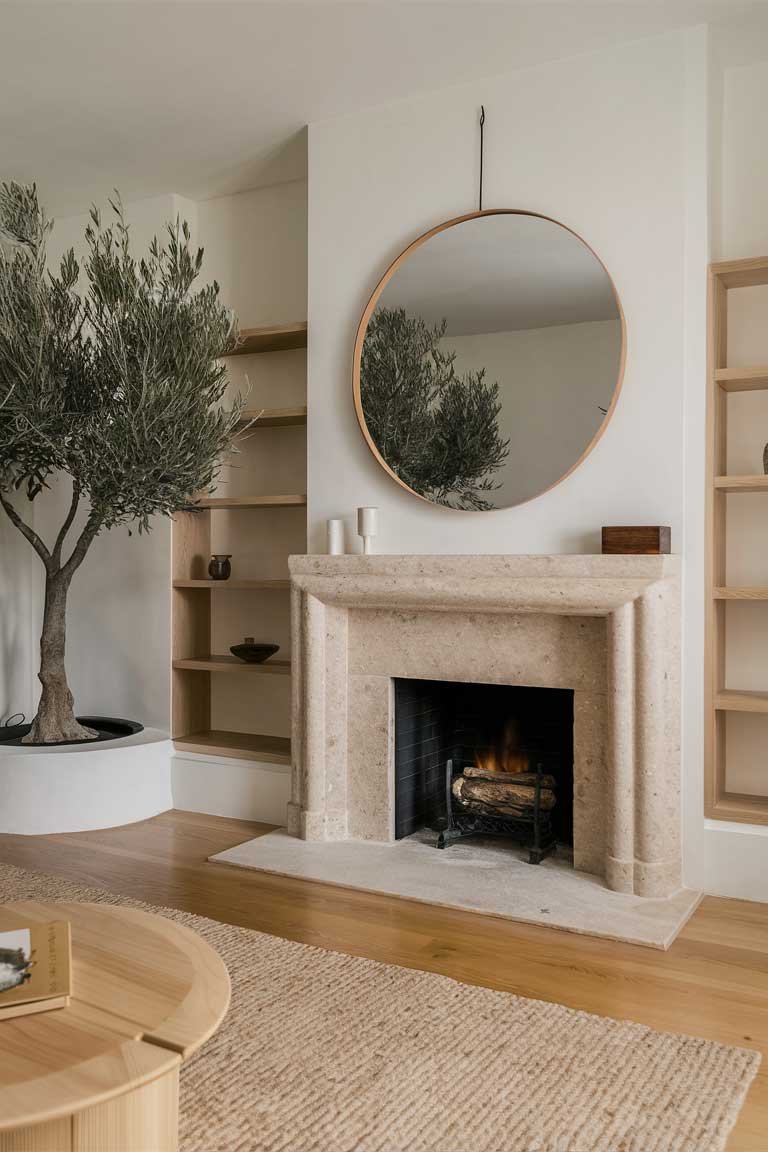
Artistic Statements
- A single large-scale organic art piece can serve as the room’s focal point.
- A unique, handcrafted furniture item, like a sculptural wooden chair, can add character.
- A statement lighting fixture, such as a large woven pendant or a branch-like floor lamp, can be both functional and artistic.
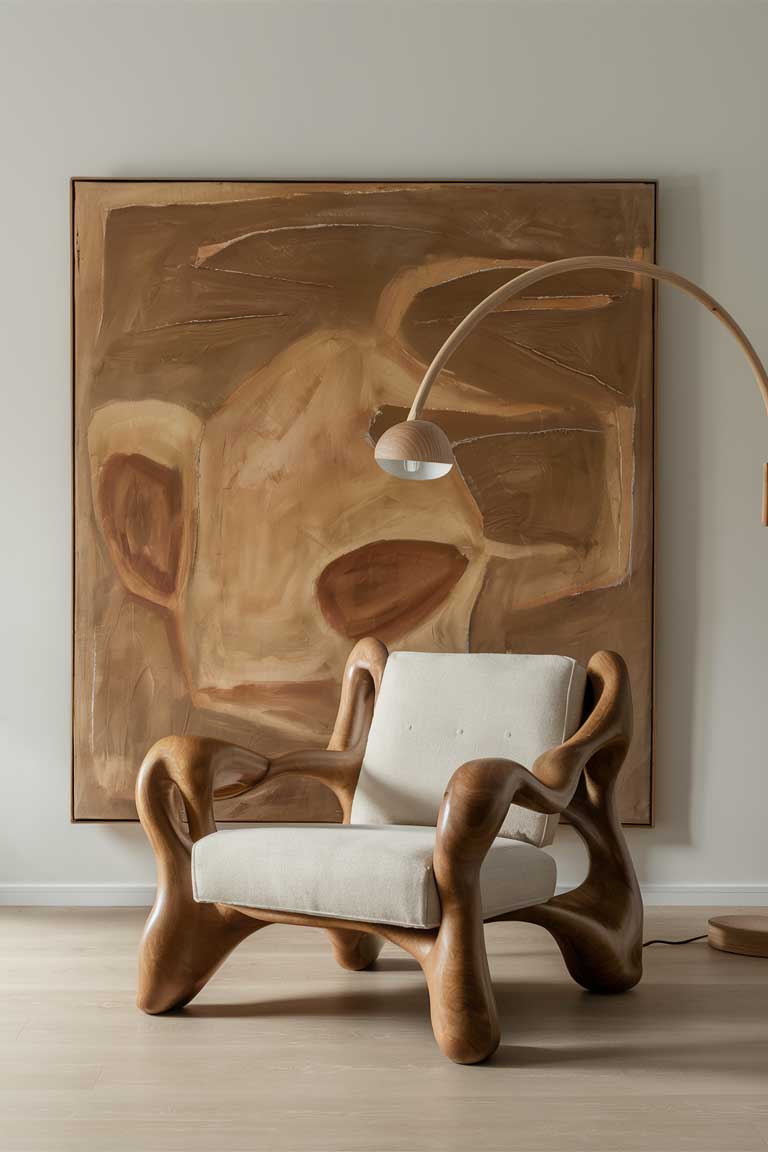
Maintaining Minimalism with Organic Elements
The challenge in a minimalist organic living room is to incorporate natural elements without cluttering the space. It’s a delicate balance, but with thoughtful curation and organization, you can achieve a space that feels both organic and serene.
Curating Organic Decor
- Choose quality over quantity. A few well-chosen pieces will have more impact than many small items.
- Rotate seasonal organic elements to keep the space fresh without accumulating too many objects.
- Balance minimalist principles with natural warmth by choosing items that serve a purpose or bring you joy.
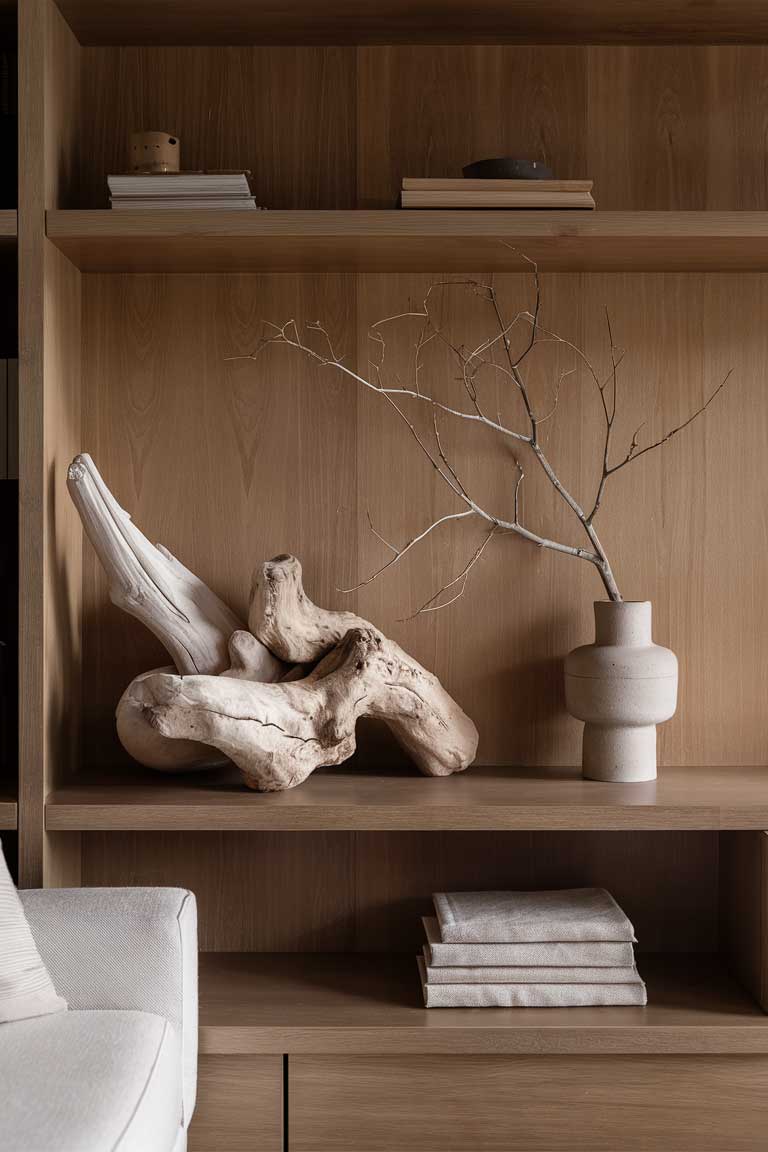
Organizational Strategies
- Invest in hidden storage solutions to keep necessary items out of sight.
- Use minimalist display techniques for organic items, like grouping similar objects or creating simple, intentional arrangements.
- Maintain clutter-free surfaces to let the beauty of your chosen organic elements shine.
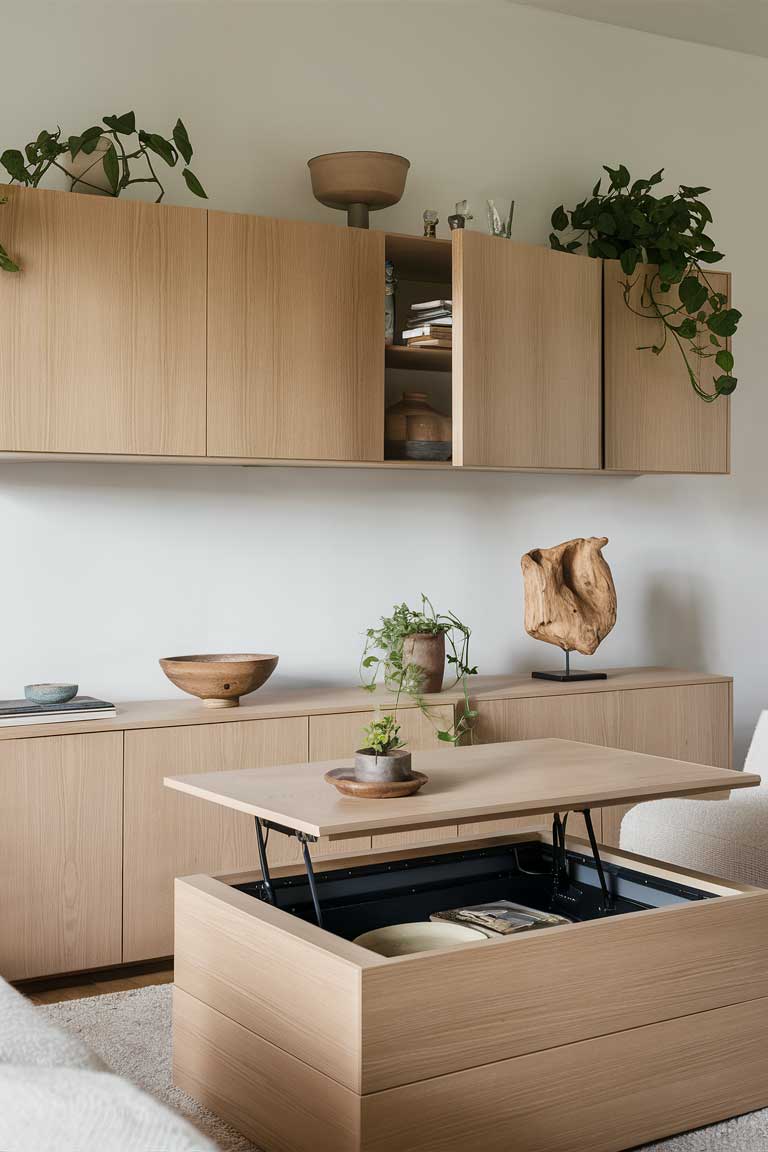
Sustainability in Minimalist Organic Design
Sustainability is a natural extension of the minimalist organic philosophy. By choosing eco-friendly materials and focusing on longevity, you’re not just creating a beautiful space – you’re also making choices that are kind to the planet.
Eco-Friendly Material Choices
- Opt for sustainably sourced wood for furniture and flooring. Look for FSC-certified products to ensure responsible forestry practices.
- Choose non-toxic, natural finishes for your wooden elements. Think linseed oil, beeswax, or water-based varnishes.
- Select organic and recycled textiles for your soft furnishings. These not only feel great but also reduce environmental impact.
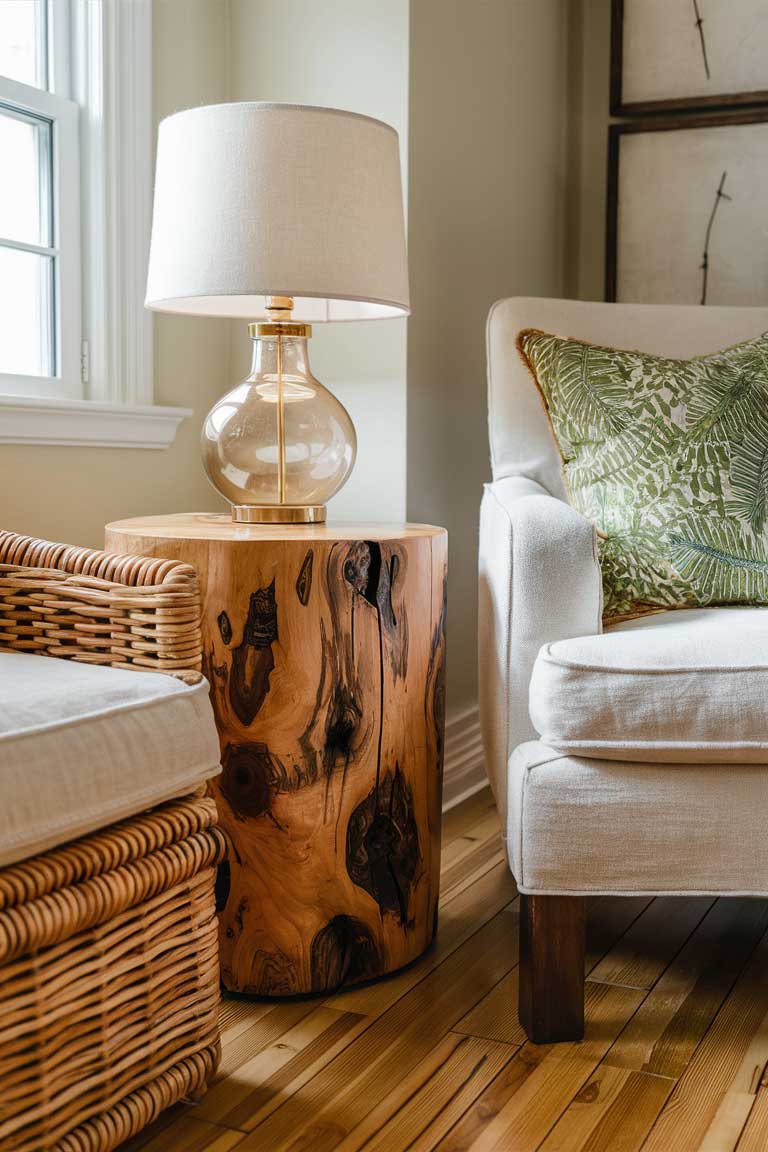
Longevity and Timelessness
- Invest in durable, high-quality pieces that will stand the test of time. This might mean spending a bit more upfront, but these items will last for years, reducing waste in the long run.
- Choose timeless designs over trendy pieces. Classic, simple forms are less likely to go out of style, ensuring your space remains relevant and appealing for longer.
- Consider ways to upcycle or repurpose organic elements. That driftwood you found on the beach could become a unique wall hanging, or old ceramic pots could be given new life with air plants.
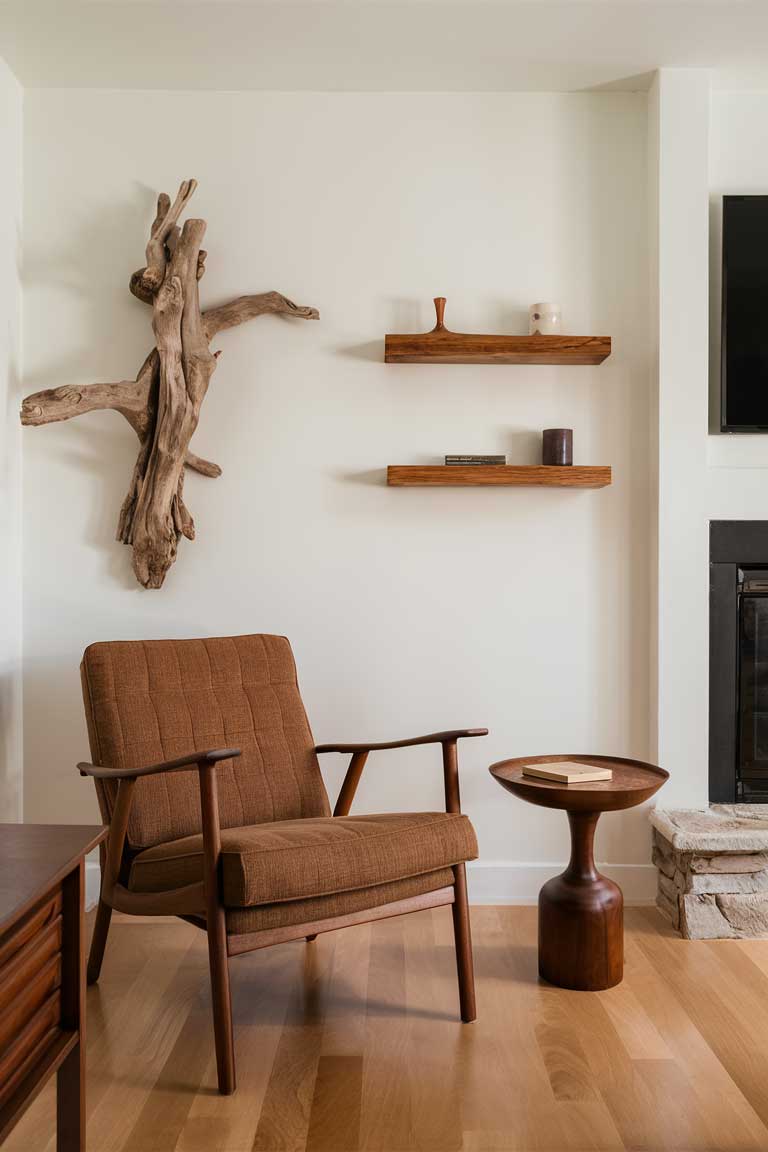
Conclusion
Creating a minimalist organic living room is more than just a design choice – it’s a lifestyle decision that can profoundly impact your daily life and your relationship with your home. By embracing natural materials, thoughtful curation, and sustainable practices, you’re creating a space that’s not only beautiful but also deeply connected to the natural world.
Remember, the key to success in this style is balance. Balance between minimalism and warmth, functionality and aesthetics, simplicity and character. It’s about creating a space that feels serene and alive, organized and organic.
As you embark on your minimalist organic living room journey, don’t be afraid to experiment and make the style your own. Perhaps you’ll find that a pop of color from a vibrant plant brings you joy or that a handmade ceramic piece from your travels adds just the right touch of personality. The beauty of this style is its flexibility – it can be adapted to suit your unique tastes and needs.
Ultimately, your minimalist organic living room should be a place that makes you feel calm, inspired, and at peace. It should be a space that allows you to breathe deeply, relax fully, and connect with the natural world’s simple beauty. By following the principles and ideas outlined in this guide, you’re well on your way to creating just such a space – a true oasis of simplicity and natural beauty in your home.
